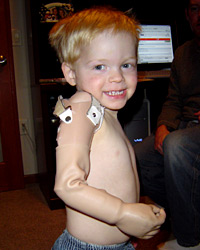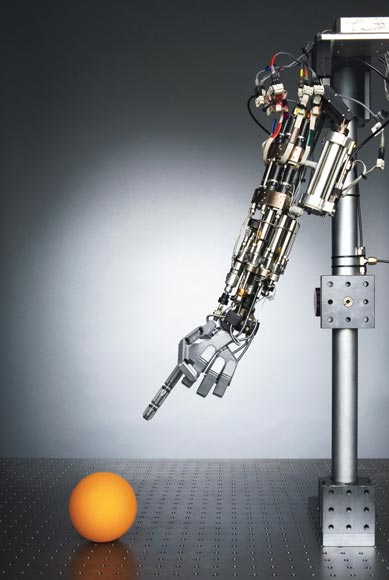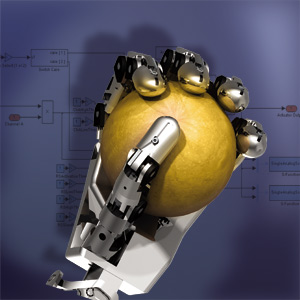Considerations
Weight
Although the myoelectric prosthesis is heavier compared to both the cosmetic and body-powered prosthetics, it is still lighter than the typical human arm. With the careful selection of material with the optimal relationship between weight and durability, the final model of a myoelectric prosthetic arm could weigh as little as 245 grams for children, of which 45 grams is the battery and 15 grams is necessary electronics. This is much less than the average 350 grams in most four year old children. Even for adults, whose arms have an average mass of over 4000 grams, an optimal myoelectric prosthesis could have a minimum mass of 1010 grams, only about a quarter of the weight.

Movement and Capability
Myoelectric prosthetics allow for a comparatively high degree of freedom compared to cosmetic and body-powered prosthetics, and it does not have the same restrictions and drawbacks as the other types do. Being powered by a rechargeable battery, the myoelectric prosthetic does not require as much physical exertion as body-powered types. This allows myoelectric prosthesis to be prescribed for patients as young as two years old. Furthermore, patients have been observed to be able to use myoelectric prosthetics to a much higher degree of control than the conventional types, even with less time and experience using them. Finally, the advantages that myoelectric prosthetics have over other types remains so even with the development of the new experimental electroencephalogram-based brain-computer interface.
Body-powered prosthetics, regardless of advancement in design, will always be controlled using other muscle movements, and the tension required causes significant strain on the patient. The frequent contractions of those muscles over a long period of time will inevitable lead to fatigue, and in some cases, even resulting in musculoskeletal disorders.
Similarly, while the more advanced brain-computer interface does indeed allow for greater degree of control than the typical myoelectric prosthesis, it requires far more complicated computer interaction with a higher chance of error. The patient must constantly think about their desired movement in order to operate the prosthesis, and more problems arise when the user is tired or otherwise inattentive. Furthermore, invasive version of brain-computer interface requires implantation of electrodes in the brain, which always carries high risks. Non-invasive version only detects electroencephalogram signals on the head, and faces the same problem of missing weaker signals as myoelectric prosthetics.


Price
The primary drawback of myoelectric prosthetics compared to conventional types is the cost. While a standard body-powered prosthesis may cost around $30,000, a myoelectric prosthesis for the same person may cost almost $100,000. It is this price tag that turns many people away from myoelectric prosthetics.
However, from follow-up studies of patients who received myoelectric prostheses, the opinions they voiced is almost unanimous. The additional functions more than justifies the extra cost. Lastly, despite the much greater costs compared to the conventional prosthetic types, with proper documentation to justify the need, most insurance companies cover the expenses for myoelectric prosthesis.


